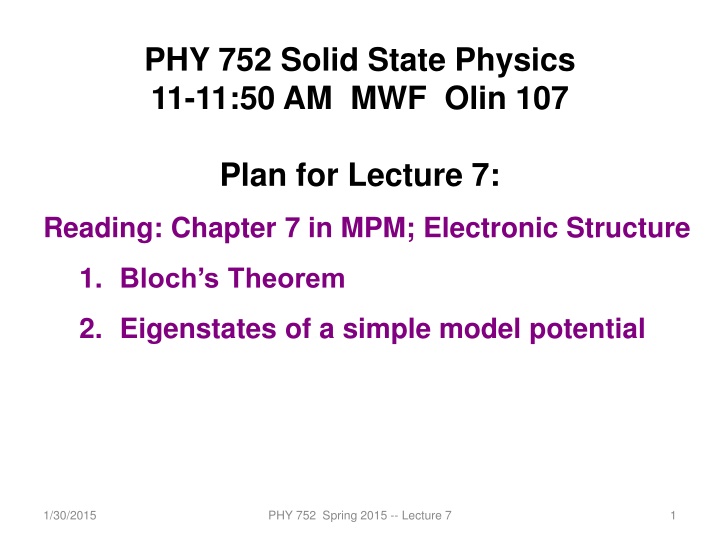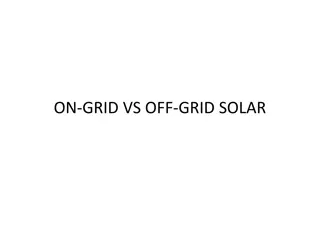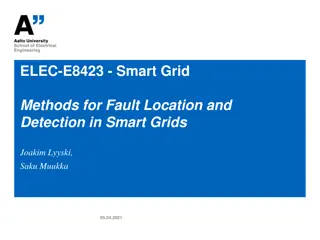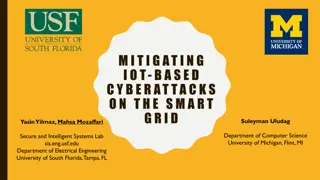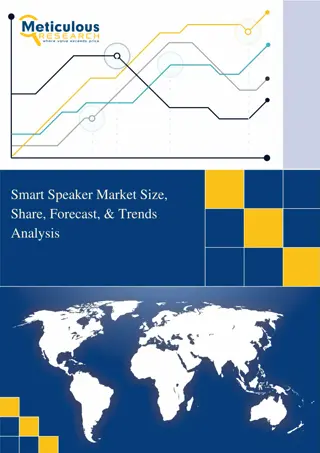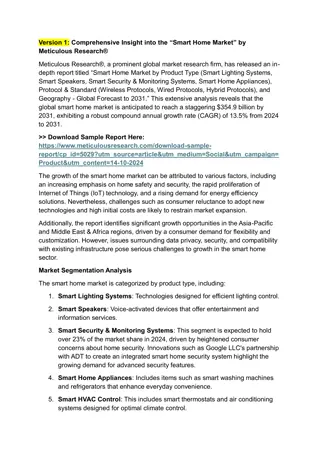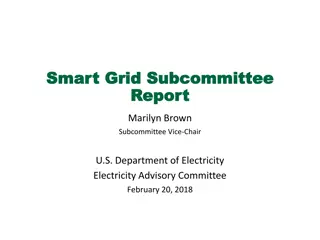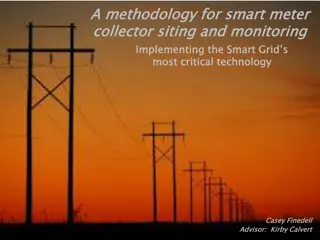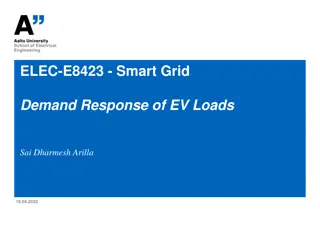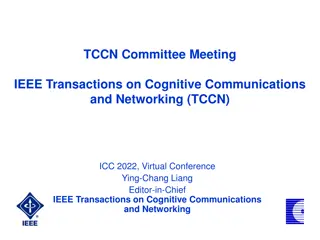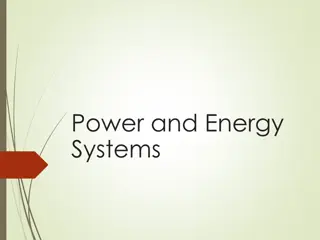Information-Centric Approach for Smart Grid Communications
The C-DAX Consortium, led by Chris Develder from Ghent University iMinds, focuses on an information-centric approach for enhancing smart grid communications. Through funding from the European Union's Seventh Framework Programme, the project aims to revolutionize the delivery and management of energy data services in a smart grid context. By adopting Information-Centric Networking (ICN), the network transforms its behavior to prioritize content delivery over traditional host-based routing. This shift enables efficient data dissemination, decoupling communicating entities and reducing configuration complexity.
Download Presentation

Please find below an Image/Link to download the presentation.
The content on the website is provided AS IS for your information and personal use only. It may not be sold, licensed, or shared on other websites without obtaining consent from the author.If you encounter any issues during the download, it is possible that the publisher has removed the file from their server.
You are allowed to download the files provided on this website for personal or commercial use, subject to the condition that they are used lawfully. All files are the property of their respective owners.
The content on the website is provided AS IS for your information and personal use only. It may not be sold, licensed, or shared on other websites without obtaining consent from the author.
E N D
Presentation Transcript
PHY 752 Solid State Physics 11-11:50 AM MWF Olin 107 Plan for Lecture 7: Reading: Chapter 7 in MPM; Electronic Structure 1. Bloch s Theorem 2. Eigenstates of a simple model potential 1/30/2015 PHY 752 Spring 2015 -- Lecture 7 1
1/30/2015 PHY 752 Spring 2015 -- Lecture 7 2
Consider an electron moving in a one-dimensional model potential (Kronig and Penney, Proc. Roy. Soc. (London) 130, 499 (1931) a V0 Schroedinger equation for electron: + 2 2 = ( ) ( ) x ( ) x V x E 2 m 1/30/2015 PHY 752 Spring 2015 -- Lecture 7 3
a V0 = + Effects of periodicity: ( ) + + + ( ) V x V x na 2 2 = ( ) ( ) x ( ) x V x E 2 m 2 2 + + = + ( ) ( ) ( ) V x na x na E x na 2 m 2 2 + = + ( ) ( ) ( ) V x x na E x na 2 m 1/30/2015 PHY 752 Spring 2015 -- Lecture 7 4
a V0 + Since ( eigenvalue problem: ( Assume K = ) and ( ) are solutions of the same ) x na + = = x na x ( ) x K i ikna e e + = ikna Bloch theorem: ( ) ( ) x x na = e k k ikx where ( ) x na + ( ) ( ) e u x u x = kk ( ) u x k k 1/30/2015 PHY 752 Spring 2015 -- Lecture 7 5
a V0 Eigenstates: 2 2 + = ( ) ( ) x ( ) ( ) V x E k x k k 2 m Band gap E(k) 1/30/2015 PHY 752 Spring 2015 -- Lecture 7 6
What causes band gaps in the electronic structure? Consider a single potential well Spectrum E 1/30/2015 PHY 752 Spring 2015 -- Lecture 7 7
( ) 2 m V E 2 mE a = = 0 Define: 2 2 V0 b = = + + x x For 0 ( ) ( ) x x a b Ae Be 1 i x i x For ( ) ( ) x a b x a Ce De 2 (0) (0) d d = = Continuity conditions: (0) (0) 1 2 x 1 2 dx d ( dx ) ( dx ) d a b d a b = = ( ) ( ) 1 2 a b a b 1 2 + = ika Also note: ( ) ( ) x x a e 1/30/2015 PHY 752 Spring 2015 -- Lecture 7 8
a V0 b Matching conditions redu cos( ) ( )cos ka F E = ce to: ( ) ( ) E b 1/2 2 V ( ) + 2 ( ) E 1 sinh ( 0 F a b ( ) 4 E E V 0 2 V E V E ( ) = tan ( ) E tanh ( ) 0 a b ( ) 2 E 0 1/30/2015 PHY 752 Spring 2015 -- Lecture 7 9
a V0 b ( ) b 2 2 49 2 16 17 = = Details for ; V b a 0 2 2 16 m E V Let f 0 ( ) 1/2 2 sinh 0.687 1 f ( ) = + cos( ) 1 cos 11.7 ( ) f k a f ( ) 4 1 f f ( ) 1 2 1 f = t an ( ) tanh 0.687 1 f f ( ) 2 f f 1/30/2015 PHY 752 Spring 2015 -- Lecture 7 10
( ) 1/2 2 sinh 0.687 1 f ( ) = + cos( ) 1 co s 11.7 ( ) f k a f ( ) 4 1 f f ( ) 1 2 1 f = t an ( ) f tanh 0.687 1 f ( ) 2 f f Forbidden states v f Forbidden states v ( ) 1/2 2 sinh 0.687 1 f ( ) = + ( ) 1 cos 11.7 ( ) f X f f ( ) 4 1 f f 1/30/2015 PHY 752 Spring 2015 -- Lecture 7 11
f Band gap Band gap ka 1/30/2015 PHY 752 Spring 2015 -- Lecture 7 12
Electrons in the presence of a weak periodic potential V0 x x = + 0 1 H H H 2 2 2 d = = 0 1 H H cos V 0 2 2 mdx a 2 + i k n x = a ( ) x e C k n a a n 2 2 + 2 k n a = 0 nk E 2 m 1/30/2015 PHY 752 Spring 2015 -- Lecture 7 13
2 2 2 d x = = 0 1 H H cos V 0 2 2 md x a 2 + i k n x = a ( ) x e C k n a a n 2 2 + 2 k n a = 0 nk E 2 m 2 2 = = 0 0 Note that E E 2 2 m a 0 1 a a Degenerate perturbation theory = 2 2 V C C C C 0 2 2 ma 0 0 = 1 E 2 2 1 1 V 0 2 2 ma 1 E V 0 1/30/2015 PHY 752 Spring 2015 -- Lecture 7 14
ka 1/30/2015 PHY 752 Spring 2015 -- Lecture 7 15
